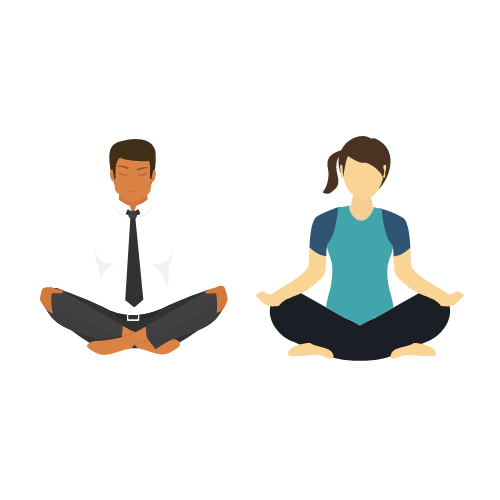There are many different approaches to meditation such as mindfulness of breath, contemplation, visualisation, mantra recitation and so on. Essentially though, they are all methods of developing what we refer to as ‘mindfulness’ and ‘awareness’. Some are more focused on developing one or the other, but most kinds of meditation will develop both – at least to some extent.
Senior teacher Jane Hope explains more about meditation below:
Mindfulness is the ability to be present – to have the mind that is fully aware of what is happening right now. It allows the minds inherent qualities – of peacefulness, vividness and strength – to develop. Awareness is what develops from this – insight into our own minds and hearts, and a deeper understanding of our lives and ourselves.
Am I suitable for meditation? I have an active mind.
Many people believe they have an unusually active mind, or that they are somehow less able to practise meditation than ‘the average person’. It may be that meditation is not suitable for everyone, but our experience of teaching meditation for nearly 40 years, is that everyone has an active mind, and everyone struggles with feeling that they can’t control what they are thinking about or quieten their minds and experience peace. In fact, an over-active and out of control mind is exactly what meditation is an antidote for.
What is the Shambhala approach to meditation?
When our founder, Chögyam Trungpa Rinpoche, started teaching meditation in the early 1970’s he referred to it as ‘mindfulness – awareness’ practice. We present meditation in a way that will develop both of these qualities at the same time. For people who wish to go further, once they are established in basic meditation practice, they are encouraged to work with contemplation practices which aim to generate certain qualities of being – usually associated with wisdom and compassion. Ultimately and for more advanced practitioners, Shambhala trains students in engaging in Sadhana practices, which typically involve a variety of different meditative practices, including visualisation and mantra. This is optional though, and many people are happy to just maintain their mindfulness and awareness practice, and gain great benefit from it.
Senior teacher Jane Hope explains more about London Shambhala below:
Do I have to believe in Buddhism to meditate with you?
No – definitely not. Mindfulness awareness meditation involves training to be present, undistracted and open to any experiences. It involves maintaining an awareness of the body breathing as well as a sense of simply being, and appreciating each moment of our existence. As such, it is not religious at all, since it requires no beliefs.
Our meditation room does have Buddhist iconography though, and some people do bow when they enter or leave it, which is totally optional. In fact all of our meditation sessions are intended for people of any belief or religion.
Is meditation good for you?
There is evidence that practising meditation reduces stress, increases well-being and health, improves relationships. However it is always a good idea to do your own research and decide for yourself – we cannot give you any guarantees that meditation will change your life, and frankly, no one should. The fact that meditation has been practised for many centuries in various cultures, often by the most gifted of individuals, does suggest there is real value in it. The key thing is understanding the logic of the meditation technique – knowing what you are doing, and why you are doing it. This is best achieved in discussion with a meditation instructor or teacher.
How long should I meditate for?
Be realistic, but also remember that the more you can practise the greater the benefits will be. It is better to practise daily (or as often as you can) for relatively short periods of time, rather than practising for a long period of time infrequently. This also helps to make mindfulness more a part of your everyday life and activities, which is of course the aim of meditation practice. Twenty minutes a day is good, twice a day is better, but 10 minutes a day is still good – be motivated, but not too ambitious.
Senior teacher Jim O’Neill explains more about meditation below:
Why should I meditate with you?It is important that you do your own research, and find a meditation centre or teacher you feel comfortable with. The Shambhala Centre is based on many centuries of meditation practice in India and Tibet. It therefore has a clear lineage connecting us to accomplished meditation masters of the past. At the same time, we present meditation in a way that is relevant to the modern world and the way we live today.
I can’t stop thinking about things when I meditate – should I give up?
Probably not. Try being curious about your thought processes and be open to whatever happens – even if it feels uncomfortable or challenging.
Can’t I learn meditation from youtube? Why would I need a centre?
It can be confusing to navigate all of the different approaches and methods of meditation practice. It is helpful to speak with an actual person about it and be able to talk about what you experience and any questions you have. Most of the skills we learn (such as how to drive, or play an instrument) involve relating with a teacher or instructor, and meditation is no different.
Need an answer? Message us at [email protected]



